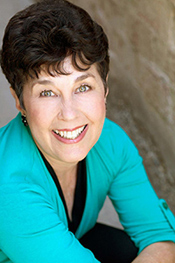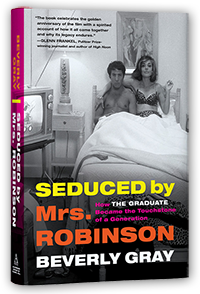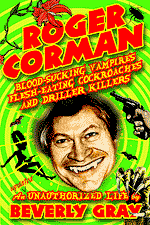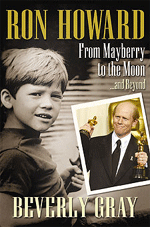Oh what a day! June
20 marks the release of Jersey Boys,
yet another attempt to bring a Broadway hit musical to the screen. There’ve
been other movie adaptations of Broadway musicals in recent years: Les Misérables, Sweeney Todd, Mamma Mia!,
and Dreamgirls immediately come to
mind. Some have had distinguished casts, and have picked up a few critics’
prizes. But with the exception of Chicago
in 2002, none has been an outstanding success. This time around, the
director is Clint Eastwood, who’s insisting that Jersey Boys is not a musical so much as a dramatic story that
happens to feature music. We’ll soon see how well that approach works, and
whether today’s moviegoers can be persuaded to overlook the dreaded “m” (as in “musical”)
word when they choose an evening’s entertainment.
There was a time when Hollywood was all about musicals. Once
The Jazz Singer introduced
synchronized sound, every studio rushed to make films that featured “all
talking -- all singing -- all dancing.” The marquees of 1930s movie palaces
touted Busby Berkeley’s backstage extravaganzas, with their oodles of beautiful
girls dancing in formation. Later that decade, audiences thrilled to Fred
Astaire and Ginger Rogers, who specialized in elegant dancefloor tête-à-têtes. The
1950s were the great years of Gene Kelly, the inventive genius behind such
classics as An American in Paris and Singin’ in the Rain.
By the late 1950s, moviegoers would just as soon stay home
and watch that newfangled wonder, television. That’s when Hollywood moguls—looking
to compete with the tiny black-and-white screens in America’s living rooms—turned
to Broadway. They shelled out big bucks for the film rights to stage musicals
that could be filmed in living color, then augmented by stereophonic
sound. It worked, sometimes very well. West Side Story (1961) was an enormous critical and popular
success. My Fair Lady (1964) was a
hit too, despite the casting of a leading lady (Audrey Hepburn) whose singing
voice needed to be dubbed. After Julie Andrews, the stage star of My Fair Lady, was snubbed in favor of
Hepburn, she was quickly snapped up by the Walt Disney Company, which cleverly
cast her in a charming original musical, Mary
Poppins.
By this time, every studio was vying to make the biggest,
splashiest, most lucrative musical of all. A fascinating book called Roadshow!, by my colleague Matthew
Kennedy, is subtitled “The Fall of Film Musicals in the 1960s.” Matt chronicles
how Hollywood’s determination to produce spectacular roadshow musicals (the
kind with reserved seats and intermissions) eventually killed off the genre.
His opening chapter, “The Musical that Ate Hollywood,” is devoted to a Broadway
adaptation that was so successful it saved Twentieth-Century Fox from ruin,
following Fox’s monstrously expensive 1963 production of Cleopatra.
Of course I’m talking about The Sound of Music. This nun-and-Nazi fest hardly had instant
appeal in Hollywood. Detractors called it The
Sound of Mucus, and actor Doug McClure sniped that “Watching The Sound of Music is like being beaten
to death by a Hallmark card.” But the film turned Julie Andrews into America’s
new sweetheart. And a brilliant mountaintop opening that made maximum use of
location shooting and a wide-screen format showed how cinema can breathe fresh
life into a stagebound play. The film’s original release was so successful it
lasted a full 4 ½ years. Only problem: all of Hollywood was now looking for the
next Sound of Music. Doctor Dolittle, Camelot,
Star!, Paint Your Wagon, Hello, Dolly! . . . . the costly flops just kept
on coming. Which goes to prove that extravagance has its price.









I'm going to have to look into that book - as I'm fascinated by those big splashy musicals that found so little favor in the late 60's - too turbulent a time for such old fashioned G rated entertainment. The musical did not bounce back for nearly a decade - I'm thinking Grease was the next big hit - and then another long dry spell through the 80's. When the 90's rolled around Disney's Newsies kept pushing its release date as they tinkered with the editing - I think it came out a year late and proceeded to bomb - though some young women hold the film in high regard thanks to its cast of attractive young men (Christian Bale, anyone?) Then there was the notorious I'll Do Anything from 1994 - director James L. Brooks shot the movie as a full on musical, but disastrous test screenings led Columbia Pictures execs to demand the musical sections be excised, leaving a curiously flat comedy drama that pleased no one. With a cast that included Nick Nolte, it might have been that generation's Paint Your Wagon.
ReplyDeleteI haven't heard how Jersey Boys has fared at the box office - which alone suggests it hasn't gone through the roof. Better luck next time, Hollywood.
I'll be pleased if my post encourages you to check out Matt Kennedy's book, Mr. C. (And so will Matt, needless to say.) There WAS one musical success story in the early 70s that I didn't mention, though Matt certainly does: Cabaret, as brilliantly directed by Bob Fosse, appeared in 1972, and won eight Oscars, even though it was up against The Godfather. It was an unusual and very special project -- and comparing the stage and movie versions of the musical teaches you a lot about how to adapt creatively from stage to screen. I'll write more about that one of these days.
ReplyDelete